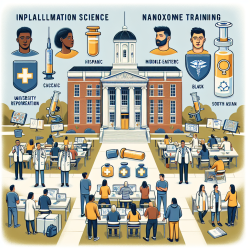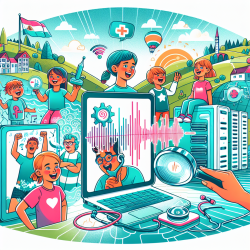Introduction
The tragic events of September 11, 2001, left a lasting impact not only on the world but also on the health of those directly exposed. A comprehensive study titled Persistent mental and physical health impact of exposure to the September 11, 2001 World Trade Center terrorist attacks sheds light on the enduring health challenges faced by survivors. This research provides valuable insights that can be applied to improve therapeutic practices, especially in online therapy services provided by companies like TinyEYE.
Understanding the Research Findings
The study examined 36,897 participants from the World Trade Center Health Registry, assessing the prevalence of conditions such as asthma, gastroesophageal reflux disease (GERD), posttraumatic stress disorder (PTSD), and depression. It was found that nearly half of the participants developed at least one of these conditions by 2015-2016, with significant comorbidity observed among them. Notably, 47.8% of participants had one or more of these conditions, with a high prevalence of PTSD (14.2%) and depression (15.3%).
These conditions were associated with poor health-related quality of life (HRQOL), particularly among those with mental health issues. The study highlights the critical need for comprehensive physical and mental health care for survivors of complex environmental disasters.
Applying Research Insights to Therapy
For practitioners, understanding the long-term impacts of trauma and environmental exposure is crucial in tailoring therapy interventions. Here are some actionable steps based on the research findings:
- Holistic Assessment: Consider both physical and mental health conditions when assessing clients. The interconnectedness of conditions like asthma, GERD, PTSD, and depression necessitates a comprehensive evaluation approach.
- Targeted Interventions: Develop interventions that address multiple conditions simultaneously. For instance, techniques that reduce stress and anxiety can benefit both PTSD and GERD symptoms.
- Focus on HRQOL: Prioritize improving clients' quality of life by setting goals that enhance daily functioning and satisfaction with life.
- Resource Connection: Ensure clients have access to necessary resources and care, particularly for mental health support. This is critical for those with PTSD and depression, who often report unmet needs for care.
Encouraging Further Research
While this study provides a wealth of information, it also opens avenues for further research. Practitioners are encouraged to explore the following areas:
- Longitudinal Studies: Conduct long-term studies to track the progression of these conditions and the effectiveness of various therapeutic interventions over time.
- Comorbidity Exploration: Investigate the complex relationships between different health conditions to develop more integrated treatment approaches.
- Technology in Therapy: Explore the role of technology in delivering effective therapy, especially in online settings, to improve access and outcomes for clients.
Conclusion
The findings from the 9/11 health impact study underscore the importance of comprehensive care and the need for practitioners to adapt their approaches to meet the complex needs of their clients. By leveraging these insights, practitioners can enhance their therapeutic strategies, ultimately leading to better outcomes for children and other vulnerable populations.
To read the original research paper, please follow this link: Persistent mental and physical health impact of exposure to the September 11, 2001 World Trade Center terrorist attacks.










